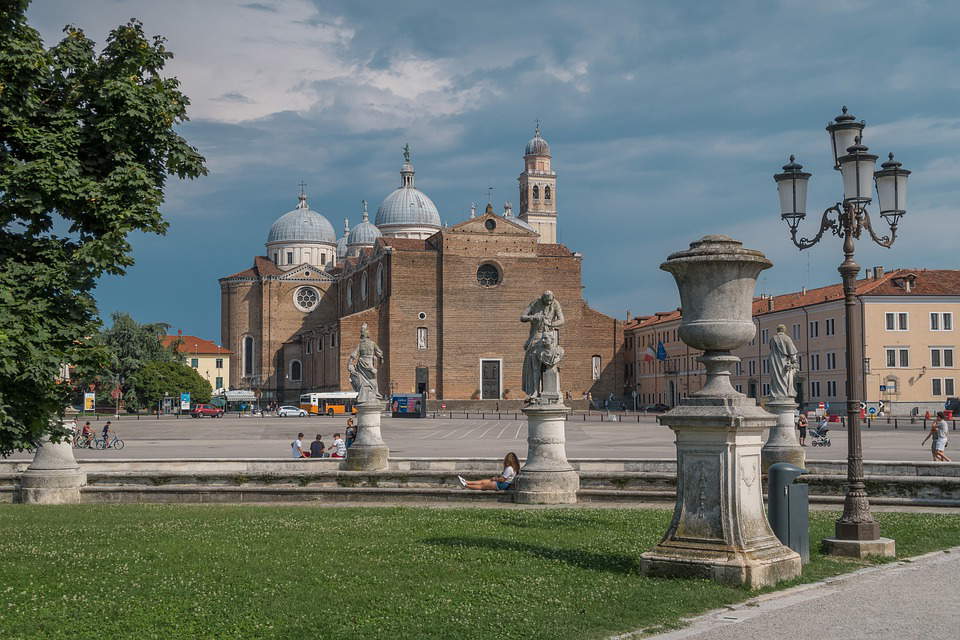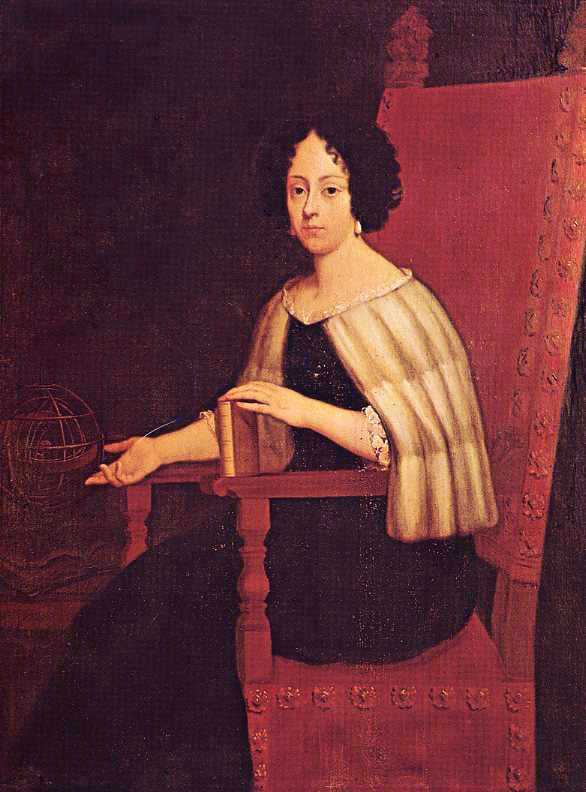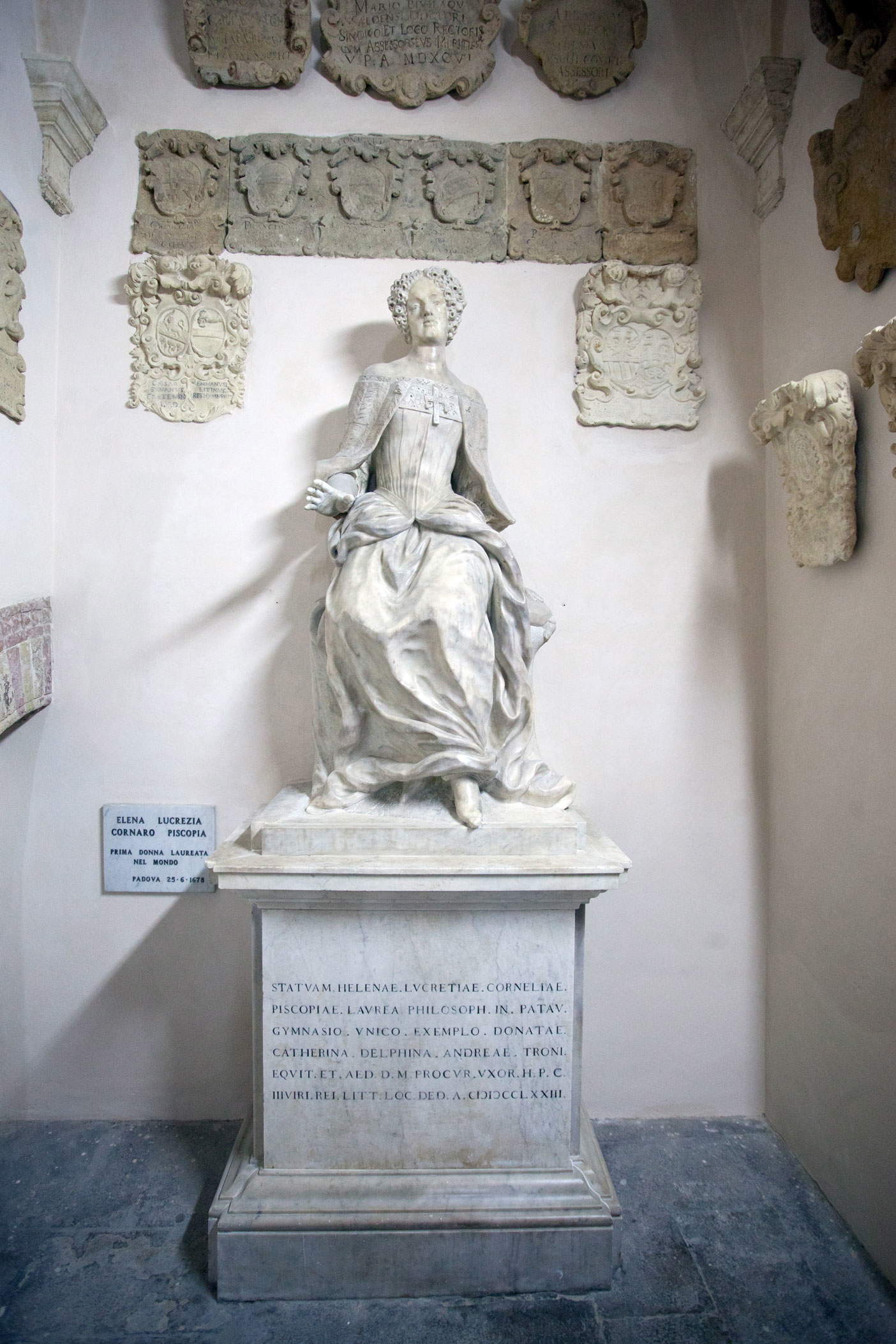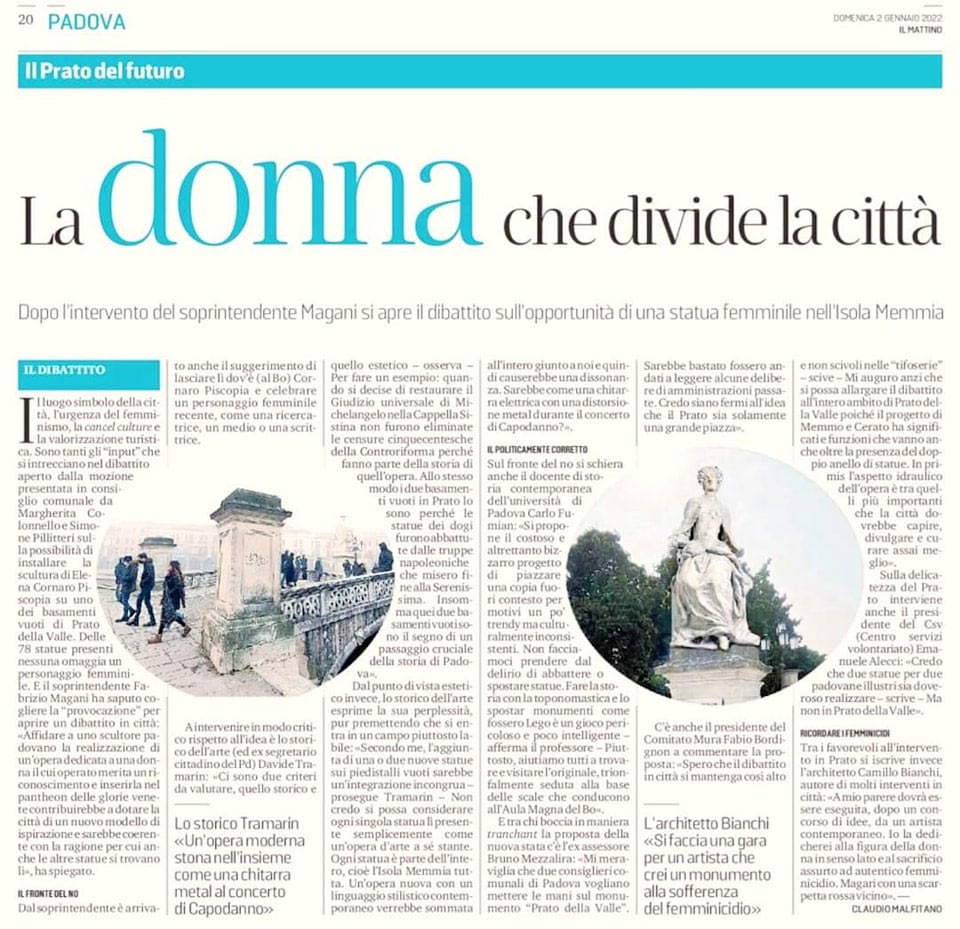There are times, which are talked about too little, when the Superintendencies accelerate work. There are times when they help spark a debate hardly imaginable even a few months earlier. In Padua, since December 27, local newspapers, as well as academics and now even ordinary citizens, have been discussing a great deal about a statue ... that is not there. That of Elena Lucrezia Cornaro Piscopia (Venice, 1646 - Padua, 1684), the world’s first woman laureate, in Prato della Valle, or rather, the one that two majority city councilors, Margherita Colonnello and Simone Pillitteri, proposed to erect to Cornaro Piscopia, first with a motion in council (Dec. 23) and then with a press conference on Dec. 27 at the two empty plinths in the square. “This is the story of a proposal that is still a dream. We want lots and lots of people to believe in it, to make Padua a city of women and to make our Prato a living monument, which guards the past but remains open, as its Enlightenment creators hoped, to progress and the future,” Colonnello wrote on social on Dec. 28.
Yes, because although they are hardly noticeable, there are 78 statues, eight obelisks and ... two empty plinths in Padua’s Prato della Valle. The redevelopment project of the square, which used to be, indeed, a Prato, is due to Andrea Memmo (Venice, 1729 - 1793), who decided to surround the artificial island now named Memmia with statues celebrating the great performers of the city’s history. In the second largest square in Europe, there is thus a kind of secular pantheon to which the city of Padua is very attached. The original plan, however, called for 88 statues; 86 were built, but at the passage of French troops that followed the fall of the Venetian Republic, six statues of doges were torn down. Shifts and rearrangements led to the present arrangement, dated to the 1840s, in which in an unsymmetrical manner statues alternate with obelisks, used as a kind of filler, and two empty plinths. Subsequent events (1848, wars of independence, birth of the Kingdom of Italy) brought that arrangement to the present day. The historical phase, characterized by the removal of female figures that characterized the history of science and art, explains why Cornaro Piscopia is not effigyed in the square unlike several less illustrious colleagues, and also less known to the Paduan community.



Elena Cornaro Piscopia’s absence from the plethora of statues in Prato della Valle was known to a few insiders but more or less ignored by a large part of the citizenry. The proposal perhaps would have been relegated to marginality until recently, but the events of recent months, particularly the debate created around the unveiling of the first female statue in Milan, then the highly criticized Spigolatrice di Sapri, then the publication of the results of the national census of women’s monuments and the resulting map by the Mi Riconosci association, have created an evidently favorable humus (the absence of statues related to really existed female figures in the main cities of Veneto was being publicized in local newspapers on December 21). It is a fact that not only did the proposal of the two councilors immediately gain high visibility, but a few days later, without any formal request from the municipality in place, Superintendent Fabrizio Magani expressed himself favorably in the newspapers (“To include her in the pantheon of Venetian glories would help endow the city with a new model of inspiration and would be consistent with the reason why the other statues are there as well.”), albeit with a different proposal from that of the two councilors, that of creating a statue dedicated to a contemporary woman, created by a Paduan artist.
At that point the debate, predictably, took a sudden and accelerated turn, as observers opposed to the intervention trusted in a stop by the Superintendency, which instead threw the doors wide open.
Even before the Superintendent’s unexpected move, Carlo Fumian, a professor of history, wrote a very harsh post on Facebook on Dec. 29: “the expensive and equally bizarre project of placing a copy out of context for somewhat trendy but culturally inconsistent reasons is proposed. Let’s not get caught up in the delusion of tearing down or moving statues. Making history with toponymy and moving monuments as if they were Legos is a dangerous and unintelligent game.” Ignoring, however, the fact that copying for the proponents was only one of the possibilities put forth by the proponents.
Davide Tramarin, art historian and former secretary of the Padua PD, also wrote on December 29 that “before even urging the Superintendence on such an impromptu project [.] I appeal to city councillors to approach with the necessary sensitivity the idea of voting for and requesting, on the part of the city, such an intervention which, only on the surface, seems simple and with admirable equal opportunity awareness raising bearing, but which in reality is deeply wrong and disrespectful to the history and ’material value’ of one of the most representative and important monuments not only of Padua, but of Italy and Europe.”
On January 2, Il Mattino, the main local newspaper, in a front-page article collected these opinions, adding others, which ended up being, however, all against and all expressed by men, except for one, that of architect Camillo Bianchi , who, however, actually proposed something quite different: a sculpture against feminicide. A favorable opinion had been expressed in the same newspaper by Vincenzo Milanesi, a professor of philosophy and former rector, writing on Dec. 31 that it was a proposal “full of positive values” that “without indulging in the fashionable ’cancel culture,’ indeed almost in countertendency to it, to our history steeped in machismo juxtaposes, without demonization, a symbol of the great significance of the female presence within that very history.”
Ubiquitous in these illustrious statements is the reference to the supposed cancel culture, despite the fact that even the only case of a statue torn down in the last two years in Europe has long since proven that it has nothing to do with the erasure of history.
The debate does not stop, indeed it explodes. On Jan. 3, the affair assumes national and international prominence, with articles in La Stampa, Corriere della Sera, il Giornale, ANSA, and The Guardian, after the rector of the University of Padua Daniela Mapelli also spoke out on the issue, saying she was in favor of opening the debate. “It is important that this debate has started in Padua,” she explained to Corriere della Sera, adding that “The topic is much broader and goes beyond the single statue.” But on the choice of Elena Lucrezia Cornaro Piscopia even the rector has some reservations: “We already have her statue in our university and that is her home. For the Prato della Valle one should not necessarily think of her. It is right that the whole city should be involved in the choice.”
In a press release issued on the afternoon of Jan. 3, the Padua branch of the Mi Riconosci association , which was somewhat co-responsible for the debate created, also expressed its opinion. “Having a male-only city pantheon has an impact on our lives and our collective imagination, we cannot deny it.” The activists note that the Prato della Valle regulations of 1776 forbade having statues of saints, living people and people who had no ties to the city, but it never forbade representing women, which therefore could be done without contradicting the wishes of the square’s creators. Through the words of activist and art historian Cristina Chiesura, one of the promoters of the census on women’s monuments, the association explains that the idea of moving a statue or installing a copy of the one that now stands in the building that houses the University did not find them favorable: “[Elena Cornaro] would find herself, among other things, in that way, to be the only seated statue in the midst of standing statues,” and adds “we also do not believe that we should focus around a single statue and a single female figure: it is true that, without detracting from the various figures effigated in Prato della Valle, her absence is very jarring, but we are certain of the need to initiate a broader reasoning about the Prato” in its entirety. The association is proposing a series of public debates on the subject.

Alessio Mazzaro, an artist from Padua and activist of Art Workers Italia, the association of contemporary art workers, has experience in participatory projects, and calls the idea of intervening on Prato della Valle “sensible, even the timing and political climate seem favorable,” yet he is concerned about the turn the debate is taking: “there is a risk of a harmful mixture, a juxtaposition between adding and tearing down that does not exist.” Mazzaro stresses how in these conditions it will not be enough to hold town assemblies, but it will be necessary to give the citizenry the tools to understand what is happening in Italy and in the world, to avoid a debate spoiled by prejudices that risk dragging it onto shores of oppositions unrelated to the reality of the proposal and the city’s needs.
With the eight hundredth anniversary of the University to be celebrated, and local elections just around the corner, it is to be sworn that this "battle of the statues," which for the first time is taking on similar dimensions in Italy, is only in its infancy: opinions and views overlap as the hours pass, but at the time of writing these lines, no one from the city council has yet spoken out on the subject. Neither the alderman for culture, nor the alderman for equal opportunity, nor the mayor. But it is to be expected that it will happen soon.
Warning: the translation into English of the original Italian article was created using automatic tools. We undertake to review all articles, but we do not guarantee the total absence of inaccuracies in the translation due to the program. You can find the original by clicking on the ITA button. If you find any mistake,please contact us.